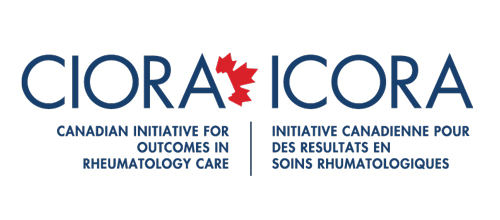Spring 2015 (Volume 25, Number 1)
Training the Rheumatologists of Tomorrow: A Qualitative Case Study
By Alfred Cividino, MD, FRCPC, FACR; on behalf of the participants
Download PDF
In 2012, the Canadian Initiative for Outcomes in Rheumatology Care (CIORA) funded a one-year grant for a pan-Canadian study to explore participants’ views on a career in rheumatology, how programs can inform and attract learners, and what to do to attract more trainees in order to meet the growing need for rheumatologists in Canada.

After receiving ethics approval, each of the nine post-graduate rheumatology programs invited their faculty and trainees to join the study. Participants completed a self-administered online survey in English or French, or an individual telephone interview in English. Data from
the 103 participants were subjected to Thematic Framework
Analysis to identify key concepts and issues separately for learners
(junior = undergraduate medical students and PGY1-3s,
senior = PGY4-6s) and faculty/administrators.
Faculty were very enthusiastic about the profession, saying “rheumatology is the specialty of the future” but noted the need to update perceptions about it, noting that “rheumatology is often thought of as dealing only with arthritis and diseases of the elderly. We need to promote rheumatology as a specialty with fascinating immuno-pathogenesis and cutting-edge research at the frontier of discovery”. They advocated targeting both undergraduates, as “people who influenced me were [role models] I had as a medical student” and junior internal medicine residents through face-to-face interactions and formal courses in medical school. Specific messages to grow interest in the field ranged from “tell them it exists: I didn’t know about rheumatology until the start of internal medicine [training]” to “emphasize [we’re] happy doctors.”
Junior learners suggested personal contact with practitioners at career talks, observerships, and other mentoring opportunities, hosting small-group information sessions with undergraduates, as well as formal training through MSK blocks and clinical skills sessions, such as providing “more teaching by rheumatologists in the medical curriculum so students are aware of what the specialty is.” Senior learners also mentioned increased rotation placements, to “make sure that we’re not turning away interested internal medicine residents.”
Messages to positively brand rheumatology include those focusing on the intellectual challenge (“novel immunotherapies make it very exciting,” “nice mix of procedural and cerebral work”), alleviating suffering, good quality-of-life (“according to a recent survey we are the happiest specialists", “excellent work-life balance”), and excellent job prospects (“the health care system needs you”).
This is the first pan-Canadian qualitative study providing an insider perspective on how to attract more trainees to rheumatology. Due to the growing shortage of rheumatologists in Canada, it is important to increase awareness about the field by selectively using limited resources, such as collaboratively developing tools to increase interest in rheumatology for use across Canada.
Alfred Cividino, MD, FRCPC, FACR
Professor,
Division of Rheumatology,
Department of Medicine
Division Director,
Division of Rheumatology,
McMaster University
Hamilton, Ontario |



